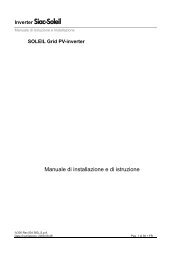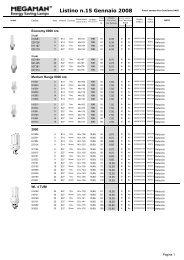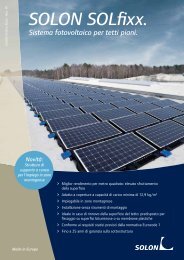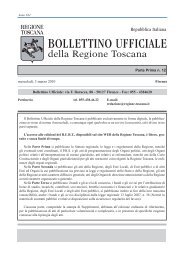Solar PV Atlas: Solar Power in Harmony with Nature - WWF
Solar PV Atlas: Solar Power in Harmony with Nature - WWF
Solar PV Atlas: Solar Power in Harmony with Nature - WWF
Create successful ePaper yourself
Turn your PDF publications into a flip-book with our unique Google optimized e-Paper software.
<strong>Solar</strong> <strong>PV</strong> <strong>Atlas</strong><br />
<strong>Solar</strong> <strong>PV</strong> <strong>Atlas</strong>: SOUTH AFRICA<br />
Less than one-tenth of<br />
one per cent (0.09 per<br />
cent) of South Africa’s<br />
land would need to host<br />
solar <strong>PV</strong> generation <strong>in</strong><br />
order to meet 100 per<br />
cent of the country’s<br />
projected electricity<br />
needs <strong>in</strong> 2050.<br />
The Republic of South Africa is a country<br />
of approximately 50.6 million people<br />
(2011). 1 In 2010, approximately 62 per<br />
cent of the population lived <strong>in</strong> urban<br />
areas, 2 and the country’s GDP per capita<br />
was US$10,280. 3 About 75 per cent of<br />
South Africans have access to electricity.<br />
The South African energy supply is dom<strong>in</strong>ated<br />
by coal, <strong>with</strong> 65.7 per cent of the<br />
primary energy supply, followed by crude<br />
oil <strong>with</strong> 21.6 per cent, renewable and<br />
wastes <strong>with</strong> 7.6 per cent and gas <strong>with</strong><br />
2.8 per cent. South Africa is a large coal<br />
producer, <strong>with</strong> proven coal reserves of 48<br />
gigatonnes, represent<strong>in</strong>g 5.7 per cent of<br />
total global reserves. 4<br />
South Africa is the third-most biologically<br />
diverse country <strong>in</strong> the world. With<br />
a land surface area equivalent to just 1<br />
per cent of the Earth’s total land surface,<br />
South Africa has almost 10 per cent of<br />
the world’s known bird, fish, and plant<br />
species and more than 6 per cent of the<br />
Earth’s mammal and reptile species.<br />
South Africa’s <strong>in</strong>credible biodiversity is<br />
due to its wide range of climatic conditions<br />
and unique topography. Most of the<br />
country is situated on a high-ly<strong>in</strong>g plateau,<br />
between two very different oceans:<br />
the Atlantic and the Indian.<br />
Habitat destruction, pollution, <strong>in</strong>vasive<br />
species, and climate change are currently<br />
threaten<strong>in</strong>g South Africa’s flora and<br />
fauna. More than 2,000 of the nation’s<br />
plants are threatened. The government<br />
is try<strong>in</strong>g to counteract this decl<strong>in</strong>e <strong>in</strong><br />
biodiversity <strong>with</strong> several programmes but<br />
progress has been slow. A rapid development<br />
of renewable energy <strong>in</strong> the country<br />
would contribute to the world’s fight<br />
aga<strong>in</strong>st climate change and could mitigate<br />
some of the local threats to habitat<br />
by reduc<strong>in</strong>g local pollution and destructive<br />
land use practices.<br />
SOUTH AFRICA<br />
© Michel Terrettaz / <strong>WWF</strong>-Canon<br />
34

















